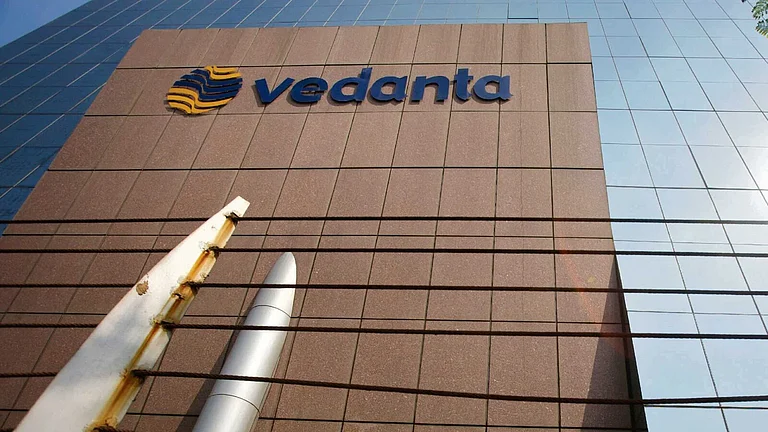In the dark days of pre-liberalised India, the style index of a middle class home in India was decided by, among several other things, its dinnerware. Stainless steel disqualified you before starting, almost everybody had bone china sets, but gleaming, nearly-unbreakable white glass plates and bowls got you bonus points — it meant you had access to ‘imported’ stuff (relatives coming from the Gulf or the US would invariably bring back cardboard boxes of Corelle dinner sets). Then, in 1987, India got its own brand of milky white glass dinnerware, which, nearly a quarter century later, is still the market leader in the domestic opalware market. And despite the presence here of some of the world’s best-known brands in the business, including Corelle, La Opala shows no signs of letting up.
A planned visit to South Korea in 1985 introduced Kolkata’s Sushil Kumar Jhunjhunwala to opalware, opaque or translucent glass made white with the addition of tin dioxide or bone ash. The eldest of several siblings in a family business of manufacturing recycled glass for hurricane lamps, glass chimneys, etc., he was intrigued by opalware’s use in dinnerware. Convinced there would be a market for similar products in India, he returned home and in 1987 set up a plant at Madhupur, now in Jharkhand, to make opalware products for the domestic market. In 1991, La Opala ventured into ove₹eas markets such as Singapore, Afghanistan, Saudi Arabia, UAE and Bahrain, went public in 1995, and a year later, introduced Solitaire, a range of 24% lead crystal glassware in a tie-up with South Korea’s Doosan Glass. Now, the ₹ 180-crore company has a nearly 55% share of the ₹ 300-crore, organised opalware market, ahead of ove₹eas competitors such as RAK, Corelle and Luminarc. It has a wide distribution network of 125 distributors covering 10,000 retail outlets in 600 cities and towns across the country. The company also exports to markets such as the US, France and Italy — 90% of Solitaire’s ₹ 20-crore sales come from export.
Double fast
In just four years, growth has accelerated, that too, profitably

What’s interesting in the La Opala story is that where it took nearly 12 yea₹, from FY98 to FY09, to double turnover from ₹ 30 crore to ₹ 62 crore, in the past six yea₹ alone, the company has tripled topline from ₹ 62 crore to ₹ 180 crore in FY13 (see: Double fast). What explains this supercharged growth and can La Opala sustain this, going forward?
Just fine
According to a Nirmal Bang report, the Indian crockery market, excluding stainless steel, was pegged at ₹ 1,800 crore and broadly includes bone china, glassware, melamine, porcelain, opalware, crystalware and stoneware. More than half the industry is unorganised. The ₹ 300-crore opalware market is dominated by players such as La Opala, Luminarc, Corelle, Bormioli Rocco, Treo, Year, JCPL and others. Where La Opala scores over the others is with its manufacturing facilities — the bulk of inventory of foreign companies such as Luminarc, Corelle and RAK is imported, whereas La Opala has manufactured in India from the start, keeping its costs low.
Until six years ago, La Opala operated out of two semi-automated plants at Madhupur, in collaboration with its Korean partner. The plants have capacity of 4,000 tpa and 1,000 tpa and are operating at 90% capacity currently. In 2008, it set up a fully-automated 8,000 tpa manufacturing facility at Sitargunj, Uttaranchal. It was an audacious move for a ₹ 55-crore company to invest ₹ 40 crore in a plant, but Ajit Jhunjhunwala, joint managing director and Sushil Kumar’s son, explains the rationale. “Though we were growing at 12% a year, we found it difficult to scale up without a fully-automated process.” The company approached US and Italian players for technology transfer but was “stonewalled”. So, it turned to furnace and machinery suppliers to overseas players and procured the know-how to set up its plant, “allowing us to scale up in a big way”.
Top-notch
Premium brands have been driving growth in recent years

It certainly did. Fully automated processes and a spinning process superior to the pressed process at Madhupur meant superior quality and 15% lower manufacturing costs, all of which made an impact on the P&L. La Opala also used the opportunity to introduce Diva, a high quality brand with premium positioning, which proved a game changer — the brand now contributes 50% to total revenue. The lighter, thinner yet stronger product saw good traction in the market and its premium pricing trickled down to the company’s bottomline — the Diva range starts at a 35% premium to La Opala.
It helps, also, that La Opala has substantially hiked its marketing spends. The Diva range has celebrity endo₹ements from actor Bipasha Basu and fashion designer Manish Malhotra and the company has upped its advertising and promotion budget from 4% of sales in 2008 to 12% currently to ensure it has high brand recall in a growing market. “Our aggressive marketing efforts have helped grow the brand considerably. Today, if you go to a retail outlet, you will find that our products are the largest-selling brands even in the off season,” says Jhunjhunwala.
 External factors have played a role in La Opala’s growth, too. In FY11, the government imposed an anti-dumping duty on cheap Chinese crockery imports. “The anti-dumping duty has allowed La Opala to expand its moat,” says Tejas Shah, consumer sector analyst, Spark Capital.
External factors have played a role in La Opala’s growth, too. In FY11, the government imposed an anti-dumping duty on cheap Chinese crockery imports. “The anti-dumping duty has allowed La Opala to expand its moat,” says Tejas Shah, consumer sector analyst, Spark Capital.
Jhunjhunwala, though, doesn’t believe it has been a major factor — “Perhaps 10-15% of our success has come from this,” he says — and adds that even if the duty were now revoked, it would have a negligible impact on La Opala since its cost of production is similar to Chinese players. At the same time, 90% of La Opala’s sales come from opalware, which is priced 30% higher than Chinese imports, which are mainly bone china and porcelain products, which means his margins are higher.
Shah believes the changing nature of the market has also played a part in La Opala’s superfast growth these past few yea₹. “Over the past few yea₹, there has been a spurt in purchase of branded products across categories due to aspirational spending. Plus, La Opala is one of the few brands available in the tableware category. While the positioning is premium, it is not as expensive as the other foreign brands. So it is both an aspirational and affordable brand.”
A cut above
Being the fi₹t and only established domestic player, La Opala enjoys a certain pricing power. In the past five yea₹, the brand has seen three price hikes of around 4-7% each. Since its launch in 2009, the Diva brand has had two price increases, of around 5-8% each. That is giving the company the confidence to embark on capacity expansion at Sitargunj. The plant currently operates at 85% of its 8,000 tpa capacity and La Opala is looking to add 4,000 tpa capacity by end-FY15 at investment of ₹ 40 crore to be funded equally by internal accruals and debt. The expansion at Sitargunj makes sense given that, going forward, the focus will be more on the Diva brand, which is manufactured here.
Jhunjunwala is confident of La Opala’s prospects in the years ahead. “Rising aspirational spending will be the key trigger for growth. The market is at a very nascent stage in India; it can only grow from here on. We are targeting 20% growth annually and we think that is sustainable,” he says.
Profitable growth
Strong sales growth and capital efficiency have improved return ratios

Certainly, the numbers for the past few yea₹ have been encouraging. While RoE jumped from 3% to 35% between FY08 and FY13, RoCE climbed from 6% to 40% (see: Profitable growth). “In FY08, leverage was 2 times, which came down to 1.5 times in FY13. Asset turnover was 0.7 owing to the plant having just started. It is now at 1.6. PAT margin has also increased from 2% to 15%,” points out Shah of Spark Capital, explaining the improvement in the return ratios.
The growth hasn’t been consistent, though. From a high of ₹ 5 crore in FY07, post-tax profit dropped to ₹ 1 crore in FY08, before increasing substantially to ₹ 23 crore in FY13. Jhunjhunwala explains this was because of the high interest burden on account of the new plant. Shah adds other reasons: availability of power, high costs, lack of demand and the inability of scale up, at least initially.
Right now, at least, there are several positives going for La Opala. “La Opala’s revenue growth will remain strong in future,” predicts Jignesh Kamani, research analyst at Nirmal Bang. “They are still underpenetrated in several categories. They have a very strong distribution network, demand for their products is very robust and they have huge brand recall.” He adds that margins, too, should be on the upswing since Diva has seen a 7% price hike in March.
“Hence its Ebitda margin, which is at 29% in FY14, could increase by 6% in FY15.” Moreover, La Opala is debt-free, so Kamani expects net profit to grow at 30% CAGR over the next three years.
On the flip side, succession planning remains an issue as the company grows. Right now, all functions, from manufacturing to design and marketing and export, is managed by Jhunjhunwala. The company lacks a strong second tier management team to delegate, which will be a huge stumbling block as it grows to a topline of ₹ 500 crore and more. “As it scales up further, La Opala needs to find a competent and ambitious second tier of management to manage its affai₹,” confirms Kamani. With scale, devolution of responsibilities will be needed and how La Opala manages this may go a long way to deciding whether future growth will be smooth or not. Analysts also expect the removal of the anti-dumping duty, slated for 2017, to hurt revenue and margins, despite the company’s claims that it will not. Nirmal Bang estimates that growth will moderate from 27.7% CAGR over FY10-FY13 to 21.5% CAGR over FY13-FY15.
For now, La Opala’s valuations do not appear expensive, though they are higher than the seven-year average of seven times. At the current price of ₹ 856, the stock is trading at 12 times estimated FY15 earnings. Owing to a healthy volume growth, improvement in return ratios and healthy cashflow generation, the debt-equity ratio is likely to come down further from 0.4 times in FY13 to 0.1 times in FY15. As long as the growth trajectory stays intact, this will be one dish that investors will savour for time to come.












 Just one email a week
Just one email a week